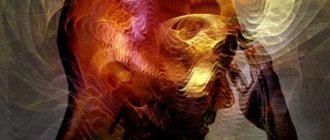Adviсe
- What is disgust
- Disgust in food
- How does disgust manifest itself?
- Disgust in sex
- Other manifestations of disgust
- How to get rid of disgust
Disgust often becomes the cause of uncomfortable situations. But researchers are sure that the feeling of disgust is one of the manifestations of a defensive reaction.
What is disgust
At an early age, children are often called picky because they do not eat food that is not prepared at home. Others are considered squeamish because they cannot stand to see other people's hair in the bathroom or on a comb. And those who do not want to share an apple are called greedy. Disgust often puts a person in an uncomfortable position.
Food and its accompanying things become a trap for squeamish individuals. People are often amused when someone else establishes ownership of certain cutlery. But it is difficult for a person to understand how people use a spoon that someone has eaten before. There are situations when people try to get rid of this “item”, but as soon as they use shared equipment, they get some kind of infection.
Psychotherapists believe that the belief that only personal devices can repel the attack of microbes is a belief in a talisman. A person, surrounding himself with his own individual things, creates a framework, a world where he feels comfortable. It also happens that the subconscious mind knows about the weakness of the immune system, and therefore protects it from bacteria with high disgust.
Bottom line
Disgust is inherent in all people. You just need to understand that it is not a negative quality, but simply a defense mechanism of the psyche, in which lies the conviction that a certain object or person can cause harm to an individual.
Disgust is not always bad. For example, there is no need to pick up food that has fallen on the floor, even if you are not squeamish, since in this case you can become infected with some kind of bacteria. You should also not live in a room where everything is covered with centuries-old dust or where there is old furniture. To some extent, disgust protects a person from what can worsen his health and even cause moral harm. Therefore, there is no need to get rid of it in these cases.
Disgust in food
Some people don't understand eating from a shared plate. This shows disgust in food. The lack of desire to allow someone to eat from one’s plate manifests itself not only in the form of a physiological aversion specifically to a shared meal, but in the form of a need to protect one’s own life and space from outside intrusion. Food is the source of life, and a collective feast has always had a sacred character, speaking of the unity of souls.
For this reason, the reluctance to share your own food from the same plate with others acts as an attempt by the subconscious to create distance from others, as well as to keep your own space intact.
Disgust to the point of horror, or fear of dirt
If disgust is associated with the fear of touching something or someone dirty or foul-smelling, which is associated with the danger of contracting some disease, these are most likely manifestations of visual fears.
Disgust as fear has its psychological roots in the ancient fear of death, inherent specifically in representatives of the visual vector. If something is disgusting, has an unpleasant smell or appearance, it means that it may be a source of bacteria or toxins, it may contain parasites, which means a danger to health and life, especially considering the weak immunity of the owners of the visual vector.
The properties of the visual vector find their fulfillment in emotions, a visual person always feels the need for an emotional connection with others, he receives pleasure from communication, from the exchange of emotions, but the direction of these feelings and emotions - either to receive or to give - already depends on the level development of the visual vector.
Fear of death, fear for one's life is the most primitive emotion, directed inward, to receive. It was able to fill the properties of the visual vector only at the very beginning of the development of mankind, during the time of early people, the ancestors of modern man. Then visual observation, curiosity, special vision capable of distinguishing a predator or enemies hidden in ambush, multiplied by a strong fear of death from the teeth of these same predators, gave the viewer a unique ability to quickly and strongly become frightened, thereby warning the entire human flock in time about the threat of danger. It was this ability to be scared that saved the early viewer his life.
Time passed, humanity developed, the ability to be afraid for one’s life no longer gave the fulfillment that it had before. Temperament, or the strength of desire in the vector, increased with each new generation, the properties of the vector found their realization in art and culture, in raising children and instilling moral values, in medicine and charity.
The primitive early fear of death, fears for one’s life grew into the ability to fear for others, to have compassion, to empathize with one’s neighbor, to fear for his life and health, and therefore made the viewer able to feel a much stronger and more complete feeling than fear. This is a feeling of love and, as its highest manifestation, a feeling of sacrificial love for all people, for all of humanity, when fear FOR OTHERS becomes stronger than fear FOR YOURSELF. At such a high level of development, a representative of the visual vector does not feel the desire to fill himself with a feeling of fear in any of its manifestations; fear for him is no longer an emotion that can satisfy him.
Feelings of love and compassion satisfy the need of the visual vector for emotions many times more fully and intensely, which means that the pleasure from such satisfaction is many times greater than the weak and temporary pleasure from experiencing fear.
An emotional connection with a person, which implies GIVING, that is, sincere pity, compassion, love for those people who need help, is a kind of aerobatics, filling vector properties at the highest level, which corresponds to the temperament of a modern person and gives the highest pleasure from activities based on such feelings.
Often, as a result of erroneous upbringing, the development of the visual vector stops at the level of fear, or more precisely, at the level of receiving pleasure from the experience of fear. A break in the emotional connection with the mother, domestic scarecrows, scary books, fairy tales, films, cruel computer games and the like fix the child in a state of fear, gradually he learns to enjoy self-frightening and continues to seek the fulfillment of visual properties in a similar way. This manifests itself in an addiction to horror films, in emo or goth movements, various kinds of superstitions, signs, up to the formation of persistent phobias or attacks of panic attacks.
Disgust, as one of the variants of manifestation of the primitive feeling of fear of death, is an attempt to realize the existing visual properties at the most elementary level, and the formation of various phobias against the background of increased disgust indicates a low level of development of the visual vector.
How does disgust manifest itself?
Disgust, which is associated with protecting space, can be seen in treating one's belongings with trepidation. Often, even in adolescence, this manifests itself in the form of a refusal to exchange blouses with friends. And the mother might be surprised that her adult daughter does not want to take things from her wardrobe, being content with her own. Perhaps this is one of the manifestations of independence, as well as reluctance to be like others. For some people, wearing other people's clothes is the same as getting into the skin of another person.
Alien smells are the same alien things. If a girl is uncomfortable when a guy covers her shoulders with his jacket, then she does not want to recognize him as “her” person. The opposite situation, when you want to wear the things of a loved one, speaks of the unity of souls and the desire to become closer together.
Disgust in sex
A special point worth highlighting is disgust in sex. As experts are sure, rejection of certain things in the intimate sphere is a method of avoiding the psychological impact of a partner. If one of the proposals becomes the cause of protests in the soul, and because of the fear of offending or the peculiarities of upbringing it is difficult to refuse, then the person begins to look for a way out of the situation.
You may have heard that certain actions in bed are humiliating and wrong. After a while, you began to understand that this is not so, but the unconscious does not allow you to step over yourself.
But on the other hand, a disgusted attitude towards the body and smell of another person is caused by the instinct of self-preservation. It has been proven that individuals with weakened immune systems and a predisposition to the development of pathogenic microflora more often go to the bathroom after sex, urging their partner to do the same.
Cleanliness or obsessive passion for cleanliness?
Representatives of the anal vector sometimes explain their passion for cleanliness by disgust. The division into “clean and dirty” is embedded in their psyche so deeply that it manifests itself in all areas of activity. For example, judgments in the style of “my blood is my children” or the bride must be a virgin - “a pure woman” are a manifestation of exclusively anal properties.
This same property of the psyche helps real critics, experts or analysts to detect and remove that “fly in the ointment” that spoils the entire result of the work, to find an oversight by performers, an error in a large-scale project, an incorrectly inserted cog in a huge mechanism and correct it, which makes such highly qualified specialists in their field are the most valuable and sought-after employees.
In the case when a person with an anal vector loses the opportunity to realize existing properties in society (quits his job, retires, etc.), he may try to realize his psychological needs in a different way, which sometimes turns into a real passion for cleanliness.
Explaining his behavior to everyone around him and to himself by increased cleanliness, a person begins to fill all his time with cleaning, scrubbing, washing, laundry and other similar activities, polishing everything around him until it shines and forcing all household members to participate in maintaining the most severe regime of sterility.
The manifestation of such hyper-cleanliness, which affects the quality of life of both the lover of cleanliness and his family members, is evidence of growing shortages, frustrations, and a lack of implementation of the innate psychological properties of the anal vector. All this can be successfully corrected by implementing socially useful activities, while receiving much more pleasure and satisfaction than from the hundredth time rubbing the toilet or washing the curtains.
In any case, understanding the nature of your desires, conscious or not, makes it possible to receive the most complete pleasure from life - from satisfying existing psychological needs.
Other manifestations of disgust
There are other manifestations of feelings of disgust. You love your cat or dog, but you have to step over yourself to clean up after it. Such disgust is a signal from the immune system about harm to the body. It is in the feces of pets that pathogenic bacteria live that can cause dysentery, gangrene and other unpleasant infections. For this reason, for those whose immunity is weak, a negative reaction to such phenomena is considered the norm. It turns out that love is one thing, but subconscious fear is a completely different matter.
The feeling of disgust towards hair in the bathroom or in bed also has a biological basis. It's like the fear of the dead. Lost hair is perceived by the unconscious as a non-living part of the body. Similar emotions are caused by cut nails. The problem is that nature has instilled in us a fear of the dead, since cadaveric poisons are dangerous to the body. At the same time, under such an installation there are also harmless “waste”, against which the body “automatically” turns on a protective reaction.
I feel the germ on my skin
Representatives of the skin vector are particularly sensitive to the skin. In addition, it is skin specialists, like no one else, who are concerned about the state of their health, because this is a value, a resource that must be spent with restraint and exclusively rationally. Sports, healthy eating, diets, daily routine - all this comes easily to them, since the ability to self-restraint is due to their psychological nature, and high-intensity metabolism quickly makes the results of such efforts noticeable.
However, in a state of stress, it is the skin that reacts first. Stress in the skin vector can be caused by a major material or social loss, such as: dismissal from work, demotion, theft of property or other valuables, it can also be a loss of time, money, opportunities, connections, employees, invested efforts and others resources.
Unhealthy conditions of the skin vector or a stress reaction of the skin can be manifested by a feeling of disgust, as the possibility of bacteria penetrating through the skin as a result of tactile contact with dirty objects. Pathogenic bacteria are a direct threat to health, which means there is a risk of even greater loss.
The psychological stress of a skin person in poor conditions results in negative skin sensations; pathogenic microbes appear almost everywhere: on door handles, handrails in transport, in public catering places, toilets, and so on.
Increasingly, a person has a desire to wash his hands, wipe them with napkins or antibacterial agents, a feeling of disgust is caused by any shared items, cutlery in restaurants, buttons in elevators, as well as handshakes, hugs, kisses and other gestures that involve contact with the skin of another person .
The skin can react to stress with itching, rashes, redness, spots, even pain or the development of inflammatory reactions.
With an understanding of the psychological background of such somatic manifestations of negative conditions of the skin vector, the problem of disgust is solved by itself and its problematic skin manifestations go away, in addition, the effectiveness of treatment of skin diseases increases significantly.
How to get rid of disgust
Even when you understand the reason for a person’s excessive rejection of other people’s cutlery or hair, it is difficult to live with this on a daily basis. Dealing with other people's disgust is difficult. Such habits and behavior patterns arise in childhood. At about 3 years old, the baby develops his own self, and disgust here acts as a setting of the boundaries of his own space. So, how can you get rid of the feeling of disgust?
For one, the frames contain underwear and a toothbrush, while for another, even a fountain pen and a computer mouse are in this area. It is often difficult for only children in the family to imagine that others are able to take their clothes and use their personal hygiene items. For such a person, it is unpleasant to eat from shared plates. And people who grew up surrounded by a large number of people believe that everything is common between “their own”. For such individuals, “we” prevails over “I.”
A man who was raised to understand the sanctity of his own space will feel uncomfortable if a girl tries a dish from his plate. This includes a subconscious protest against interference in personal territory. It is not easy to negotiate with such people, but it is possible. If for you, eating a cake in half is a component of harmony in a relationship, then talk to your partner and suggest expanding the boundaries a little.
Basically, all individuals have certain “points” that they are not able to forget about even for the sake of their loved ones. Let’s imagine a situation where a girl doesn’t want to share food from her plate, and a guy is frozen in front of the sink with a mountain of unwashed dishes. In such a situation, compromise and barter will help. Their effect has long been proven. The man here should be freed from washing dishes, but for this he will stop touching your food.
A similar example applies to other disgust situations. The main thing is to find an approach and a compromise.
For many years, scientists have focused on the relationship between obsessive-compulsive disorder (OCD) and premorbid personality traits. E. Kraepelin [29] and P. Janet [6] wrote about this; representatives of the psychoanalytic school suggested a common etiology of OCD and anankastic personality traits [19, 23, 27, 28]. It is widely believed that risk factors for the development of OCD include such personality traits as an increased sense of responsibility [26, 44–47, 50] and excessive perfectionism [41, 42, 49]. But not all psychiatrists recognize this connection. Thus, A. Lewis [33] denies the significance of obsessive-compulsive character traits for the development of OCD.
Recent studies have discussed the influence of disgust on the development of the contamination type of OCD [35, 38, 40, 52, 53]. At the same time, disgust in the psychological aspect is considered within the framework of its connection with one of the basic emotions - the emotion of disgust [30, 36, 40]. However, in clinical studies of OCD [2, 16, 17, 37, 48], practically no attention is paid to the phenomenon of disgust. The phenomenon of disgust is not highlighted as a maladaptive character trait in modern classifications of mental illnesses (ICD-10, DSM-IV-TR) [12, 22].
It is known that one of the most severe variants of OCD is mysophobia (fear of infection, contamination) [1, 4, 5, 9-11, 13, 14, 18, 33, 43]. There is data [1, 5, 8, 10, 18] on the high frequency of comorbidity of mysophobia with schizophrenia and its connection in these cases with delusional disorders, catatonia, and deficit disorders. The latter circumstance to a certain extent complicates the analysis of the relationship between constitutional personality traits and OCD.
As for mysophobia that develops outside of schizophrenia, L. Loewenfeld [34] wrote that erased forms of mysophobia, which are cases of excessive disgust that does not violate the individual’s way of life, are quite common in women (the author includes “mania of purity” in women). regarding the apartment, household items, clothing and one’s own body). Studies in recent years (mostly epidemiological) have revealed a sufficient prevalence of mild forms of OCD, including fear of contamination, in the general population [24, 25, 51]. At the same time, some people with OCD do not turn to psychiatrists or come to their attention due to concomitant disorders [24]. It can be assumed that mild forms of contamination obsessions interact to a greater extent with personal pathology than “malignant obsessions” (according to N. Ruemke [43]).
The purpose of this study is to study the connection between constitutional disgust, the dynamics of personality disorders and the formation of contamination-type OCD.
Material and methods
The study included patients with contamination obsessions who were undergoing inpatient treatment or who sought outpatient care at the Department for the Study of Borderline Mental Pathology and Psychosomatic Disorders (headed by Academician of the Russian Academy of Medical Sciences A.B. Smulevich) of the Scientific Center for Mental Health of the Russian Academy of Medical Sciences.
Mysophobia included OCD (according to ICD-10 criteria), occurring with a predominance of pollution obsessions and/or cleansing compulsions. Patients were selected with mild forms of contamination obsessions that met the following criteria: 1) no influence of obsessive-compulsive symptoms on social status; 2) the limitation of the manifestations of contamination OCD to a separate situation (rituals appeared only at home in the presence of a child, only in relation to food or some particularly valuable object, etc.), accompanied by the ability, if necessary, to hide the manifestations of OCD; 3) psychological “understanding” of rituals in the patient’s current life situation. An important inclusion criterion was the ability to collect objective information. In all cases, the closest relatives (1-2 people) were interviewed. The characterological characteristics of relatives of the first and second degrees of kinship have been clarified.
The study did not include patients with organic lesions of the central nervous system, severe somatic diseases, signs of alcoholism and dependence on psychoactive substances, under the age of 16 and over 65 years.
The studied sample consisted of 56 patients, 24 (43%) men and 32 (57%) women, whose average age was 29±6 years.
Sociodemographic characteristics of the sample: 39 (70%) patients were married, 17 (30%) were single; 34 (61%) worked or studied, 22 (39%) did not work. Thus, the sample was dominated by people with preserved social status, the vast majority worked or received education, and more than half were married. There were no people with disabilities due to mental illness among those examined. The data presented indirectly indicate quite favorable dynamics of obsessive-compulsive symptom complexes in the studied cases.
Of the selected patients, 12 were examined on an outpatient basis, 44 were hospitalized. The duration of obsessive-compulsive disorder with symptoms of mysophobia, as determined by anamnestic data, at the time of the examination averaged 4.1 ± 2.6 years. The mean hospitalization rate averaged 0.18 per year. Often the reason for treatment was not contamination obsessions, but the addition of obsessions of contrasting content, embedded in the structure of mysophobia.
results
During the study, 3 main types of contamination obsessions were identified in the observed patients: type 1 - mysophobia (in the traditional sense of the term - “phobia of disgust”), type 2 - contamination nosophobia, type 3 - purification compulsions.
Mysophobia or disgust phobia
was present in 13 patients, 7 men and 6 women, whose average age was 28±6 years.
The clinical picture of this type of OCD was characterized by pathological disgust with fear of contact with any polluting substances, as well as persistent avoidance of “dirty” objects and everything connected with them. With this type of OCD, protective rituals are formed, which are a complex, specially designed system of cleansing measures.
The leading characteristics of premorbid personality in patients of this type are anankastic (obsessive-compulsive personality disorder) and anxious (avoidant personality disorder) traits. The phenomena of perfectionism, characteristic of all three types as a whole, appear together with traits of uncertainty and a tendency to quickly form anxious concerns. The desire for increased control is combined with fears of possible failure and self-doubt. Excessive pedantry and scrupulousness in business is largely based on the fear of making a mistake and the fear that this mistake will lead to some adverse consequences. In almost all observations, those examined from childhood demonstrated a tendency to doubt, and in half of the cases - to everyday “double-checking” and/or rituals of “wishing for good luck.” The latter, however, are subjectively viewed not as painful manifestations, but rather as a way to better control the situation.
The formation of clinically defined mysophobia in most cases occurs against the background of long-term psychogenia: uncomfortable living conditions, caring for a seriously ill relative, a chronic infectious disease in someone at home, the appearance of a newborn child in the house, digestive problems (for example, the phenomenon of irritable bowel syndrome ). The trigger factor is the objective need to adhere to increased hygiene measures, coupled with alarming fears of making a mistake and not doing what is necessary in full. This type of contamination obsessions is characterized by their known partiality - as a rule, the patient’s home becomes the object of excessive fear, while being on the street or in public places is not regarded as a critical situation.
The duration of observed obsessive-compulsive manifestations at the time of the study was up to 10 years (on average 4.7 years), which often exceeded the period of the specified unfavorable external environment.
Contamination nosophobia
[] - were identified in 35 patients - 14 men and 21 women, average age 29±5 years.
They are characterized by fear of the penetration of certain pathogenic microorganisms into the body, persistent avoidance of contact with frightening substances or their possible carriers, and the formation of a system of protective rituals in the form of cleansing activities.
The leading characteristics of premorbid patients of this type are anankastic (obsessive-compulsive personality disorder) and narcissistic (in some cases hysterical) traits. The phenomena of perfectionism (in contrast to patients classified as the first type) are largely associated with inflated self-esteem, the desire not so much for excessive control over the situation, but for achieving an “ideal” result. Increased attention to detail and pedantry are largely based on one’s own ideas about how this or that task should be done. Another side of the personal make-up is increased impressionability, a rich imagination combined with reactive lability, a tendency to form transient anxious reactions in response to psychogenic harm. In some patients classified as this type, psychogenic (usually hypochondriacal) phobias are registered, although they are short-term in nature, but are accompanied by vivid imagery and a pronounced affect of anxiety.
As a rule, episodes of contamination nosophobia develop acutely, often after a psychogenic provocation (watched TV show, news of a serious illness of someone you know, contact with a potential source of charging, etc.). In some cases, repeated exacerbations are characterized by a new denotative complex, usually associated with the content of the corresponding psychogenic factor. Obsessions of the type under consideration occur in the form of episodes outlined in time with a predominance of anxiety; their duration averaged 1.5 ± 0.9 years.
Among the rituals for type 2 OCD, actions aimed at disinfection predominate: disinfectants and protective agents (masks, gloves) are used to fight infection or to prevent harmful substances from entering the body. As a rule, the content of fears reflects the fear of contracting certain contagious, especially dangerous diseases (AIDS, hepatitis, rabies, viral encephalitis, etc.).
It should be noted that, unlike hypochondriacal phobias, patients are not inclined to reveal signs of the diseases that frighten them; attention is directed outward, to the search for possible external sources of danger. In the vast majority of cases, they have little knowledge of the clinical picture of the infectious disease and do not attempt specific treatment for the suspected disorders.
Often cases of contamination nosophobia were complicated by the integration of obsessions of contrasting content into their structure. Thus, the fear of contracting a sexually transmitted disease is accompanied by the fear of losing control over one’s actions and deliberately infecting oneself and one’s loved ones.
As with type 1 OCD, the lifestyle of patients with this type of obsession is not completely subordinated to fears and rituals. They often skillfully hide the manifestations of OCD in public, continue, despite the maximum severity of the disorder, to attend work, study, go to restaurants, although at the same time at home they may refuse to eat for fear of infection, and devote most of their free time to performing rituals .
Purification compulsions
were present in 8 observations, in 5 men and 3 women, whose average age was 25±4 years.
In the observations studied, we are talking about motor obsessions, represented by repeated acts of purification, performed without connection with any phobic formations.
The leading characteristics of the premorbid in patients of this type are anankastic (obsessive-compulsive personality disorder) and schizoid traits. Patients from this group of observations most fully correspond to the classic description of anankastic personality disorder [48]. Patients are characterized by exaggerated conservatism, rigidity, adherence to strict, long-defined rules of behavior, a tendency to monotonous activity, and difficulty switching from one type of activity to another. Perfectionism is not associated either with an increased level of anxiety or with a narcissistic desire for an ideal; it is based on a tendency to clearly and correctly follow an established stereotype of behavior. Another characteristic premorbid feature can be called a tendency to form motor rituals (patients step over thresholds in a special way, cracks in the asphalt, etc.).
The development of obsessive-compulsive manifestations of type 3, in contrast to obsessions of types 1 and 2, usually occurs autochthonously. In the studied observations we are talking about compulsions represented by repeated motor acts of cleansing. The need to perform them is associated with a “sensory phenomenon” (according to A. Okasha [39]) - a difficult to describe bodily sensation, an indefinite feeling of incompleteness, incompleteness, and insufficiently correct execution of the action. Compulsive movements continue until there is a special feeling of correct and precise execution of the action - the just right phenomenon [31, 32]. The need to repeat an action arises when performing any motor act - washing hands, getting dressed, turning electrical appliances on and off. Patients, as a rule, are not able to verbalize the reason for the urge to repeat actions. In the observations that made up this group, repeated washing of hands (less often of the whole body or any objects: equipment, dishes, etc.) predominated. Given that repeated compulsive acts can affect almost any area of activity of patients, it was cleansing and hygienic procedures that became the most critical. In other words, we are talking about a variety of motor obsessions, among which compulsions associated with cleansing clearly dominate.
Anamnestic information showed the presence of premorbid traits of disgust in patients of all 3 groups (with 3 types of OCD), which was determined by subjective and objective indications of increased sensitivity in contact (both direct and associative) with objects or situations that cause a feeling of disgust, and a tendency to avoiding them. Patients describe “intolerance” to a whole range of unpleasant objects and objects, experiences, and immoral situations.
In a significant proportion of patients, disgust has been detected over several previous generations (usually along one line), about which it is possible to collect information.
In the three groups studied, different variants of the combination of disgust with personal characteristics were identified.
In patients with mysophobia (type 1), the phenomenon of disgust is inextricably linked with a tendency to anxious fears. Since childhood, they pay increased attention to objects and situations that are potentially dangerous to the body: they monitor the freshness of food, experience a feeling of disgust for unfamiliar types of food; prefer to avoid the risk of radiation exposure even in small doses, for example, if possible, they try to avoid X-ray diagnostic procedures and travel to unfavorable areas. The development of mysophobia in the studied cases follows the mechanism of increasing the premorbidly characteristic disgust. The main clinical manifestation is chronic anxiety, a feeling of incompleteness and insufficiency of action, which contributes to an increase in the number of stimuli that cause disgust, and an increased tendency to avoid and protect against them. Thus, the dynamics of obsessive-compulsive disorders of the mysophobia type are characterized by a gradual amalgamation of psychopathological manifestations (increased anxiety and wariness of observing hygiene standards) with constitutionally characteristic traits of disgust. Patients formally acknowledge the unfoundedness of their fears, but do not experience significant discomfort from excessive hygienic measures. Stable persistence of obsessions of this type does not lead to pronounced changes in adaptation.
The phenomenon of disgust in the group of contamination nosophobias is associated with increased impressionability and reactive lability. Since childhood, possible pollution or infection is elevated to the rank of a disaster, they are accompanied by vivid figurative representations of the consequences - an ugly appearance due to pollution and the lack of exemplary cleanliness of the environment lead to ideas about one’s own insolvency, negative attitude and condemnation from others; The slightest damage to the skin or indirect indicators of a violation of the integrity of the body shell (the appearance of wounds and blood, murder scenes in movies, the sight of fresh meat) evoke images of serious illness and death. The emotion of disgust arises in response to stimuli that do not correspond to the aesthetic ideas of patients, which, due to perfectionism, often turn out to be exaggerated.
Unlike obsessions of the 1st type, the development of obsessive-compulsive syndrome is not accompanied by an increase in constitutionally determined disgust and an expansion of the range of stimuli that cause it, but is associated with the formation of new forms of protective-ritual behavior (aimed at preventing contacts with frightening substances and cleansing rituals). After the passage of time-limited episodes of OCD, remission is formed, in the structure of which only the constitutional disgust characteristic of patients since childhood is revealed.
The phenomenon of disgust in the group of purification compulsions is associated with certain rigid attitudes, usually originating in family traditions, with strict adherence to long-established rules of hygiene and housekeeping, some of which already obviously have the character of rituals like “motor perfectionism” [7] . For example, a list of “especially dirty” tasks is highlighted, after which hands must be washed several times, each family member has their own dishes, and special rules for storing food are developed. Often, cleaning the house takes place in the form of a special ritual - a strict sequence of actions is formed that does not allow a single contaminated item to be overlooked, dishes and other items associated with eating, as well as plumbing, are carefully processed.
The phenomena of increased disgust, registered long before the manifestation of the disease, as in type 2, do not undergo significant changes and appear in the picture of compulsions as a result of the predominance of purification rituals. In these observations, the relationship between constitutional disgust and obsessive-compulsive phenomena is realized exclusively at the denotative level.
Discussion
When analyzing the relationship between premorbid personality characteristics of patients with constitutional disgust and the subsequent development of contamination obsessions, polymorphism of personality manifestations was identified. Despite the fact that in all cases some features of an anankastic warehouse were found (phenomena of exaggerated perfectionism, rigidity, increased need for control, conservatism, tendency to doubt), in general, the premorbid characteristics of patients with different types of contamination obsessions are characterized by different personal characteristics - manifestations of anxiety (avoidant ), histrionic (narcissistic) and obsessive-compulsive personality disorders.
Disgust traits are persistently preserved in the clinical picture in all studied cases. They do not tend to change (types 2 and 3), or change only quantitatively (type 1).
It was found that the formation of obsessive-compulsive disorders occurs with the participation of constitutional pathology. At the same time, the clinical characteristics of OCD are largely correlated with the premorbid personality make-up, and the denotative complex is correlated with the constitutional phenomenon of disgust. It should also be noted that the level of interaction of obsessive-compulsive manifestations with the phenomenon of constitutional disgust is not the same: with type 1 (mysophobia), comorbid connections are formed with the formation of common symptoms, with types 2 and 3 - overlap only at the level of denotation of obsessions.
It can be assumed that disgust is not a pathocharacterological disposition, but a persistent constitutional personality trait that contributes to the development of contamination obsessions.
The nosological qualification of the studied cases showed that in the majority of observations (46 patients; 82%) we are not talking about an endogenous disease, but the dynamics of personal pathology. This is supported by the favorable course of the disorders, which is not accompanied by persistent disturbances in the adaptation of patients, as well as the fact that after exacerbations have passed, the formation of any negative symptoms is not observed. In these cases, we can talk about dynamics according to the mechanism of personality development: development with the identification of obsessions according to P.B. Gannushkin [3], personality disorder with a tendency to identify positive psychopathological phenomena according to A.B. Smulevich [15].
However, in 10 cases (1 - mysophobia, 2 - obsessions with extracorporeal threat, 7 - purification compulsions), the condition was classified within the framework of sluggish (psychopathic-like) schizophrenia. This qualification is supported by the clear dynamics of pathocharacterological disorders - increasing egocentrism, tendencies towards crude manipulative behavior [20]. Emotional reactions in patients in this group were stereotyped, hypertrophied, accompanied by posing and mannerisms, and personality changes in general were largely characterized by schizoid spectrum disorders. Among the latter, the impoverishment of the inner world, the lack of deep interests and intellectual production with an increase in autism, asthenia, thinking disorders and a reduction in energy potential came to the fore [21]. Nevertheless, there were no gross deficit changes characteristic of schizophrenia, which occurs as a “malignant disease of obsessions” [43], as well as an increase and severity of obsessive-compulsive symptoms themselves. In this regard, we can say that in the cases studied we are talking about a course that is realized primarily in the sphere of personal pathology (“schizophrenia is a development” as opposed to “schizophrenia is a process,” as is observed in malignant obsessions).
Thus, disgust is a personality trait, constitutionally conditioned, on the basis of which obsessive-compulsive phenomena are formed, which are included in the structures of pathological personality development.
[] 1The term “nosophobia” in this article is used in the understanding of L. Loewenfeld [34], who designated one of the forms of pollution obsessions associated with the fear of contracting infectious diseases.










